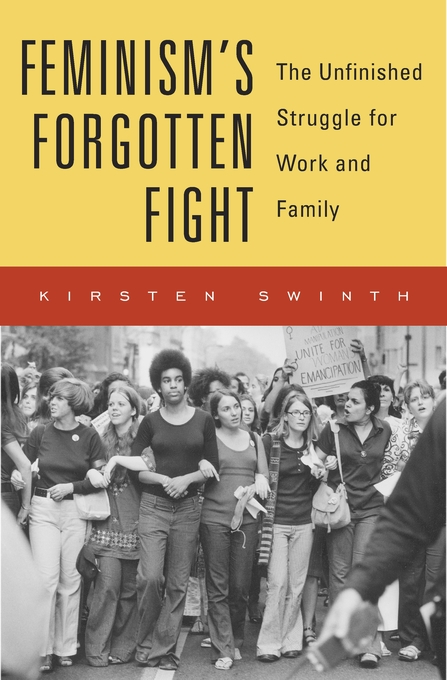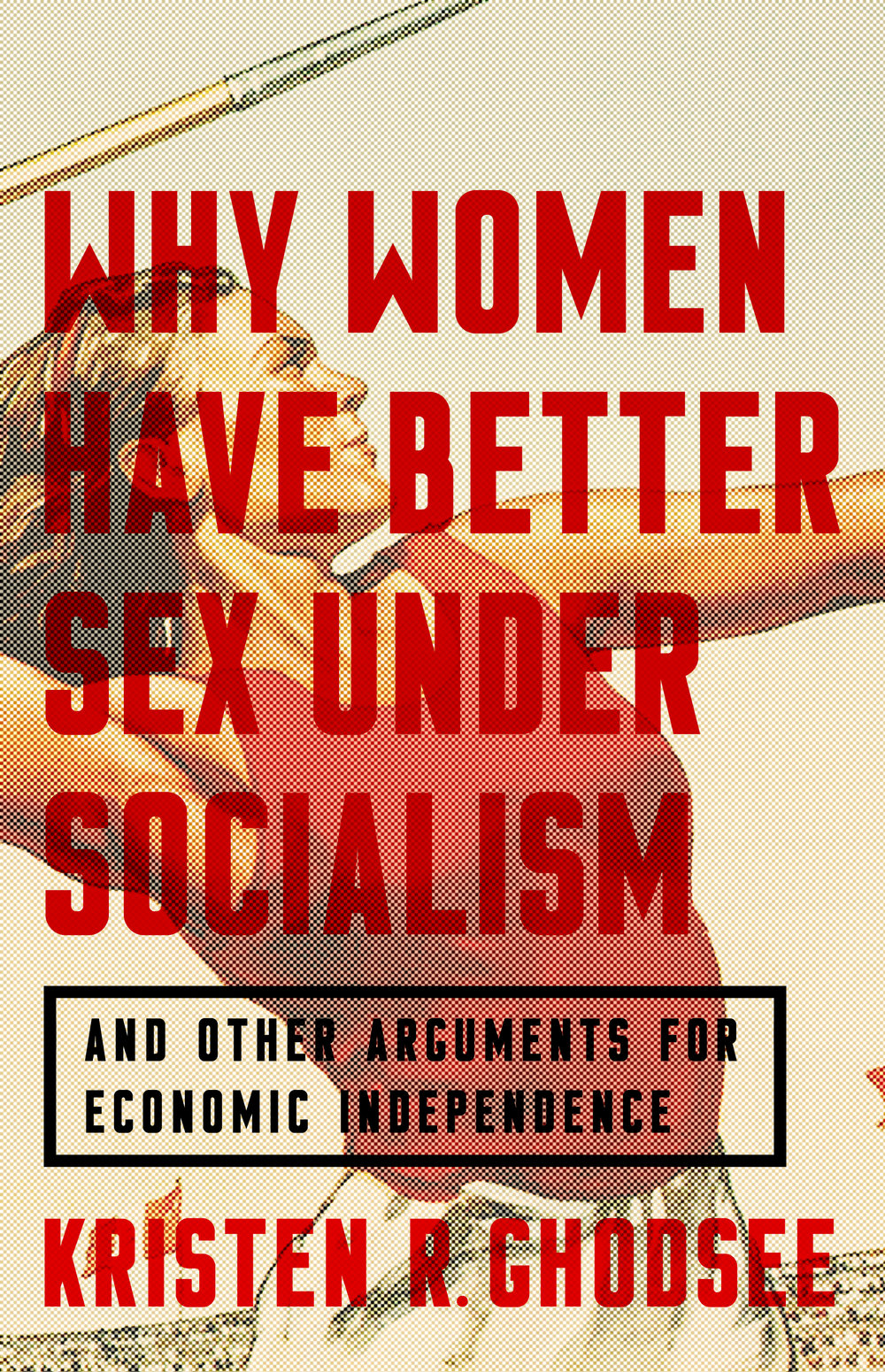For Kristen R. Ghodsee, it was the moment she caught a glimpse of herself in the bathroom mirror between two stages of a job interview, bent under the hand dryer at an awkward angle that allowed her to pump breast milk frantically while drying leakage from her jacket.
For Amy Westervelt, it was waddling to the mailbox to collect a check, two weeks after the birth of her child, while congratulating herself on “emailing from the recovery room” to make “a big deadline 48 hours after delivery. No one I worked with even knew I’d had a baby. … Power woman!”
Many women could share similar stories: moments when they realized that, under contemporary American capitalism, motherhood “kinda suck[s],” to quote Westervelt. Three new books—Ghodsee’s Why Women Have Better Sex Under Socialism, Westervelt’s Forget Having It All: How America Messed Up Motherhood—and How to Fix It, and Kirsten Swinth’s Feminism’s Forgotten Fight: The Unfinished Struggle for Work and Family—explore how and why our society is structured to make motherhood so hard. They explore efforts to redefine motherhood in different eras, places, and cultures; and what those experiences have to teach us.
Transforming motherhood is “the lynchpin to systematic transformation” of our society, Westervelt argues. “Mothers—arguably more so than women in general—remain disempowered despite 40 years of feminism,” according to feminist scholar Andrea O’Reilly, whom Westervelt quotes, and that disempowerment is reflected in the workforce. Mothers are the fastest-growing group of minimum-wage workers, Kristin Rowe-Finkbeiner, chief executive officer and co-founder of the advocacy group MomsRising, tells Westervelt. They get paid less for their labor than fathers, and than women who aren’t mothers. Westervelt writes that these wage gaps are “larger and more persistent than the wage gap between men and women.”
All three books suggest that transforming motherhood for the better will require transforming each part of women’s “double shift”—that is, women’s performance of both wage labor and reproductive labor. Since the 1970s, stagnant real wages have pushed women into the workforce, but women still take on the majority of the cooking, cleaning, and childcare.
As “a ‘family wage’ for men [became] increasingly rare, feminists provided the first viable alternative to the dominant gender and family arrangement,” Swinth writes. She documents second-wave feminists’ push for systemic changes to marriage, the workweek, childcare, and welfare that would make being a parent, and a worker, more sustainable and rewarding. Today, just 14 percent of United States households fit the male-breadwinner, female-homemaker model—but, as Westervelt shows, much remains to be done to fulfill the decades-old aspiration to restructure society around multiple-earner, multiple-caretaker families.
These three books are complementary to one another, offering different perspectives on why motherhood has become so difficult, what needs to change, and how it could. Why Women Have Better Sex Under Socialism is a slim primer on what socialism offers women, perhaps especially those who choose to become mothers: “If done properly,” Ghodsee writes, “socialism leads to economic independence, better labor conditions, better work/family balance, and yes, even better sex.” She supports her claims with original research into the lives of Eastern European women before and after the fall of Communism, considering a number of indicators of female liberation, including the measure of freedom and security enjoyed by mothers. Though Ghodsee is an academic, her book is not just “readable” (the faint praise so often given to mainstream books written by professors)—it’s actually fun.
Swinth, too, is an academic, and Feminism’s Forgotten Fight is a more traditional academic book. It’s narrower and less prescriptive, and works to dispel the popular claim that feminists “promised women they could have it all, but what we got instead was mothers who … sleepwalk through stressed-out and exhausted lives, with little meaningful time for their children. Feminism ignored the family, the story goes … [or was] outright hostile to the needs of family.”

(Photo: Harvard University Press)
Swinth demonstrates that second-wave feminists did work to redefine motherhood and support mothers—but that their crucial work was obscured by conservative backlash and mainstream resistance to the radical changes that feminists thought necessary. Swinth sums up the establishment response in a quote from Letty Cottin Pogrebin, founding editor of Ms. magazine: “Let her do it all. Why not? As long as there are no tremors beneath the status quo; as long as men don’t have to give up their political supremacy, good jobs, hot dinners, casual fatherhood, sexual devices, birthright power.”
With an intellectual history of American motherhood from the arrival of the English settlers, Westervelt sets out to uncover “how it was that a culture that superficially holds motherhood in such high esteem could in fact have so little regard for women who have children.” She’s pragmatic in her response, suggesting a policy fix and a cultural fix at the end of each chapter that she thinks could be implemented without “massive cultural and economic change.” Her prose, direct and colloquial, is punctuated by deeply satisfying moments of ire at the demands placed on working mothers. Westervelt is a journalist, and by her own admission, “a tired working mom … [with] no energy left to sugarcoat.”
In Ghodsee’s account, American motherhood is avoidably burdensome primarily because of capitalism. Women take on a double shift at home because it is profitable—but not to them. Working women, particularly working mothers, absorb the externalities of a system that “thrives on women’s unpaid labor in the home because women’s care work supports lower taxes. Lower taxes mean higher profits for those already at the top of the income ladder—mostly men,” she writes.
Ghodsee is not an apologist for Soviet socialism, and she acknowledges that the system didn’t eliminate a gendered division of labor in the workforce, or women’s double shift at home. But she rejects the idea that “the entire experience of state socialism consisted of people standing in breadlines and snitching on their neighbors to the secret police.”
You get a sense of what socialism in Eastern Europe did accomplish, when you read a letter that Ghodsee received from a woman who’d raised a child in socialist Czechoslovakia. Ghodsee’s correspondent referred mockingly to her “generous” maternity leave—just eight months—and complained about how early she had to get up to take her daughter to the free daycare a full 15 minutes away. Her husband, off work in the early afternoon, would prepare dinner before her return home at 5. She reported that they were both exhausted by the day’s labors.

(Photo: Hachette Books)
“I suspect she has no idea how luxurious this routine might sound to women, even European women, trying to balance work and family today,” Ghodsee writes. “In fact, the Cambridge Women’s Pornography Cooperative publishes a book called Porn for Women that features men who pick up their children, buy groceries, and cook dinner before their wives get home from work.”
In a twist on Ghodsee’s account, Westervelt draws a distinction between patriarchy—a value system that predates capitalism and is not necessarily reliant on it—and capitalism proper, “the economic system best matched to patriarchy.” Their close integration in contemporary American society is at the root of mothers’ troubles, she argues. Westervelt’s vision of patriarchy per se is of a system that prizes certain traits historically associated with men, including “competition, individualism, logic,” and undervaluing, for example, “expressiveness, compassion [and] connection.”
Westervelt places a high value on the communal parenting practiced by many indigenous and ethnic minority communities—the idea “that each family should take care of itself, that children are the sole responsibility of their biological parents,” is, for her, “the rotten foundation on which modern American parenting stress is built.”
In practice, Westervelt, Ghodsee, and the feminists Swinth writes about end up championing many similar policy programs. But they offer different accounts of how those changes might come about. Ghodsee thinks radical change in women’s lives generally emerges from top-down, socialist policies, which, she insists, “have been and can be implemented in democratic societies.” She spends much of her concluding chapter, therefore, urging young women to “get their butts to the polls.”
Westervelt, on the other hand, thinks that simply “slapping Scandinavian-style policies on a committedly capitalist society” like ours is doomed to failure. Instead of taking inspiration from Sweden, “the mythical land of utopian gender equality,” she argues that America should look at what’s happened in Japan, where the government has taken the route of imposing socialistic policies, but found that unchanged cultural attitudes around gender and caregiving impeded the transformation of mothers’ roles. “If you want to substantially change anything in America,” she writes, “you need both cultural change and policy change.”

(Photo: Da Capo Press)
Swinth’s Feminism’s Forgotten Fight makes clear that Westervelt is right about that. The book illustrates that policy shifts just don’t happen without cultural shifts. Second-wave feminists’ struggles for the kind of policies that Westervelt is pushing for, like thoughtfully instituted flexible work schedules, were often blocked by resistance to the cultural ideals underpinning them. Again and again, Swinth recounts, feminists battled mainstream adherence to the male-breadwinner idea—and when they couldn’t win hearts and minds, they failed to change policy.
But the second part of Westervelt’s argument—that Swedish-style policies are too utopian to help American parents—isn’t always convincing. Most strikingly, in her section on parental leave, Westervelt contradicts her own earlier claim: At first, she warns American parents not to “[look] wistfully at Swedish-style policies”—they’d be better off taking inspiration from “an example a bit closer to home, economically and politically: Japan.”
In Japan, the government mandates that generous parental leave be offered to both men and women. But fathers, still attached to their breadwinner role by personal choice and workplace expectation, seldom take advantage of the program, which means mothers are still the ones to derail their careers. The solution, according to Westervelt? Swedish-style policies that offer equal leave for both parents under a “use it or lose it” mandate.
Indeed, Swinth documents that a number of second-wave feminist victories—especially those spearheaded in the courts by Ruth Bader Ginsburg—were inspired by policies enacted in social-democratic Sweden. Ginsburg spent time in Sweden, learned Swedish, studied Swedish law, and wrote a number of articles and books on the subject. According to Swinth, she “credited her exposure to Swedish thinking about equality with shaping her outlook.” More broadly, the second-wave American feminist movement was inspired by “Swedish programs for tax reform, social benefits, pre-school, shorter work hours, and women’s employment,” she writes.
“Five years ago,” Westervelt recounts, “an editor who had worked at Marie Claire and then Elle told me, when I asked her advice on pitching a story related to motherhood: ‘Oh, you can’t bring that to any of the women’s magazines. They all have a rule against covering motherhood.'” As Westervelt points out, recent efforts in popular culture have helped weaken the taboo against critically discussing motherhood, including literature like Sheila Heti’s Motherhood and the work of comedians like Ali Wong. These three new books are thought-provoking, useful additions to a burgeoning canon—and to a struggle still in progress.



